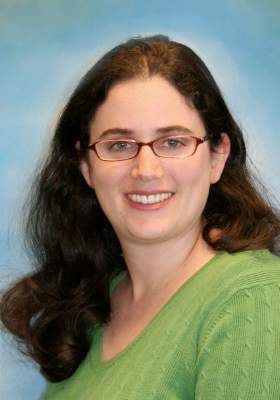User login
BIRMINGHAM, ALA.– The time to colonoscopy after a positive fecal occult blood test varied widely between health systems and also varied based on age and comorbidity score, in a study of more than 62,000 patients from four health systems
The median time to colonoscopy after a positive fecal occult blood test (FOBT) in 62,384 patients in the Population-based Research Optimizing Screening through Personalized Regimens (PROSPR) Network ranged from 41 to 174 days. Most of those who received a follow-up colonoscopy did so within 3-6 months of their positive FOBT.
The percentage of patients followed up with colonoscopy within 12 months ranged from 58.1% to 83.8%, with lowest percentages occurring in the two systems with the longest median time to follow-up, Jessica Chubak, Ph.D., of Group Health Research Institute and her colleagues reported in a poster at the American Society of Preventive Oncology annual meeting.
The rate of colonoscopy follow-up within 12 months also decreased with advancing age and increasing Charlson comorbidity score. For those aged 55-59 years, 60-64 years, 65-69 years, or 70-75 years, the hazard ratios for follow-up were 1.02, 0.98, 0.98, and 0.90, respectively, compared with the youngest age group (50-54 years). But for those patients aged 76-84 years or 85-89 years, the hazard ratios were 0.65 and 0.34, respectively.
For those with a Charlson comorbidity score of 1, 2, or 3 or more, the adjusted hazard ratios for follow-up of were 0.93, 0.87, and 0.70, respectively, compared with those with a score of 0, the investigators said.
No significant differences in follow-up were seen based on gender, body mass index, or race/ethnicity.
The investigators used administrative and clinical data to estimate the time to follow-up and probability of follow-up for all persons with a positive FOBT in 2011 and 2012.
The findings have implications for future research on improving follow-up in older patients and those with comorbidities, the study authors said.
The differences between health care systems may be due to varying practices. The two organizations with the best time to colonoscopy follow-up in the network are health maintenance organizations with targets for time to colonoscopy and monitored appointment supply.
In contrast, the organization with the second longest time to follow-up was an HMO that contracted with external providers for about 60% of colonoscopies. The organization with the longest time to follow-up was a safety-net system with limited colonoscopy capacity that served socioeconomically disadvantaged patients who may have faced more barriers to colonoscopy completion.
Colorectal cancer is the fourth most common cancer in the United States, and FOBT is an important screening strategy that relies on follow-up in the event of a positive finding.
“Our findings that both individual-level factors as well as health care system were associated with follow-up strengthens the rationale for investigating multilevel interventions to improve follow-up after abnormal screening tests,” the researchers concluded.
The National Cancer Institute funded the study.
BIRMINGHAM, ALA.– The time to colonoscopy after a positive fecal occult blood test varied widely between health systems and also varied based on age and comorbidity score, in a study of more than 62,000 patients from four health systems
The median time to colonoscopy after a positive fecal occult blood test (FOBT) in 62,384 patients in the Population-based Research Optimizing Screening through Personalized Regimens (PROSPR) Network ranged from 41 to 174 days. Most of those who received a follow-up colonoscopy did so within 3-6 months of their positive FOBT.
The percentage of patients followed up with colonoscopy within 12 months ranged from 58.1% to 83.8%, with lowest percentages occurring in the two systems with the longest median time to follow-up, Jessica Chubak, Ph.D., of Group Health Research Institute and her colleagues reported in a poster at the American Society of Preventive Oncology annual meeting.
The rate of colonoscopy follow-up within 12 months also decreased with advancing age and increasing Charlson comorbidity score. For those aged 55-59 years, 60-64 years, 65-69 years, or 70-75 years, the hazard ratios for follow-up were 1.02, 0.98, 0.98, and 0.90, respectively, compared with the youngest age group (50-54 years). But for those patients aged 76-84 years or 85-89 years, the hazard ratios were 0.65 and 0.34, respectively.
For those with a Charlson comorbidity score of 1, 2, or 3 or more, the adjusted hazard ratios for follow-up of were 0.93, 0.87, and 0.70, respectively, compared with those with a score of 0, the investigators said.
No significant differences in follow-up were seen based on gender, body mass index, or race/ethnicity.
The investigators used administrative and clinical data to estimate the time to follow-up and probability of follow-up for all persons with a positive FOBT in 2011 and 2012.
The findings have implications for future research on improving follow-up in older patients and those with comorbidities, the study authors said.
The differences between health care systems may be due to varying practices. The two organizations with the best time to colonoscopy follow-up in the network are health maintenance organizations with targets for time to colonoscopy and monitored appointment supply.
In contrast, the organization with the second longest time to follow-up was an HMO that contracted with external providers for about 60% of colonoscopies. The organization with the longest time to follow-up was a safety-net system with limited colonoscopy capacity that served socioeconomically disadvantaged patients who may have faced more barriers to colonoscopy completion.
Colorectal cancer is the fourth most common cancer in the United States, and FOBT is an important screening strategy that relies on follow-up in the event of a positive finding.
“Our findings that both individual-level factors as well as health care system were associated with follow-up strengthens the rationale for investigating multilevel interventions to improve follow-up after abnormal screening tests,” the researchers concluded.
The National Cancer Institute funded the study.
BIRMINGHAM, ALA.– The time to colonoscopy after a positive fecal occult blood test varied widely between health systems and also varied based on age and comorbidity score, in a study of more than 62,000 patients from four health systems
The median time to colonoscopy after a positive fecal occult blood test (FOBT) in 62,384 patients in the Population-based Research Optimizing Screening through Personalized Regimens (PROSPR) Network ranged from 41 to 174 days. Most of those who received a follow-up colonoscopy did so within 3-6 months of their positive FOBT.
The percentage of patients followed up with colonoscopy within 12 months ranged from 58.1% to 83.8%, with lowest percentages occurring in the two systems with the longest median time to follow-up, Jessica Chubak, Ph.D., of Group Health Research Institute and her colleagues reported in a poster at the American Society of Preventive Oncology annual meeting.
The rate of colonoscopy follow-up within 12 months also decreased with advancing age and increasing Charlson comorbidity score. For those aged 55-59 years, 60-64 years, 65-69 years, or 70-75 years, the hazard ratios for follow-up were 1.02, 0.98, 0.98, and 0.90, respectively, compared with the youngest age group (50-54 years). But for those patients aged 76-84 years or 85-89 years, the hazard ratios were 0.65 and 0.34, respectively.
For those with a Charlson comorbidity score of 1, 2, or 3 or more, the adjusted hazard ratios for follow-up of were 0.93, 0.87, and 0.70, respectively, compared with those with a score of 0, the investigators said.
No significant differences in follow-up were seen based on gender, body mass index, or race/ethnicity.
The investigators used administrative and clinical data to estimate the time to follow-up and probability of follow-up for all persons with a positive FOBT in 2011 and 2012.
The findings have implications for future research on improving follow-up in older patients and those with comorbidities, the study authors said.
The differences between health care systems may be due to varying practices. The two organizations with the best time to colonoscopy follow-up in the network are health maintenance organizations with targets for time to colonoscopy and monitored appointment supply.
In contrast, the organization with the second longest time to follow-up was an HMO that contracted with external providers for about 60% of colonoscopies. The organization with the longest time to follow-up was a safety-net system with limited colonoscopy capacity that served socioeconomically disadvantaged patients who may have faced more barriers to colonoscopy completion.
Colorectal cancer is the fourth most common cancer in the United States, and FOBT is an important screening strategy that relies on follow-up in the event of a positive finding.
“Our findings that both individual-level factors as well as health care system were associated with follow-up strengthens the rationale for investigating multilevel interventions to improve follow-up after abnormal screening tests,” the researchers concluded.
The National Cancer Institute funded the study.
AT THE ASPO ANNUAL MEETING
Key clinical point: Increasing age and comorbidities reduce the likelihood of colonoscopy follow-up for a positive fecal occult blood test.
Major finding: The percentage of patients followed up with colonoscopy within 12 months ranged from 58.1% to 83.8%.
Data source: An analysis of administrative and clinical data from four health systems with more than 62,000 patients in the PROSPR Network.
Disclosures: The National Cancer Institute funded the study.

